In a sign of extreme desparation, mortgage insurers and lenders are signing up for a new program that pays borrowers to keep paying their mortgage.
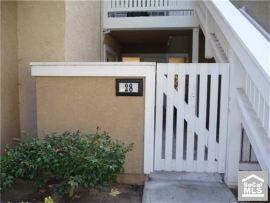
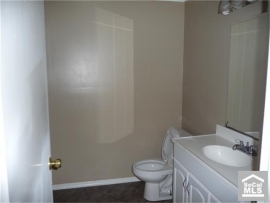
Irvine Home Address … 28 GREENFIELD Irvine, CA 92614
Resale Home Price …… $335,000
.png)
Pay me my money down
Oh pay me, oh pay me,
Pay me my money down,
Pay me or go to jail,
Pay me my money down
Bruce Springsteen — Pay Me My Money Down
I have long contended that people who are underwater and paying more than the cost of a comparable rental should strategically default. They are pouring their money down a black hole never to be seen again.
Lenders have tried appealing to morality, but unfortunately for them, strategic default has become common and accepted. Their efforts at appealing to morality have failed.
As families strategically default get out from under their crushing mortgage payments and get to keep living in their houses for two years or more, their friends and acquaintances take notice. As others observe the benefits people obtain from strategic default, they consider it themselves. Once people see someone they know and respect strategically default, all moral compunction vanishes.
Lenders have tried incentivizing loan owners to continue to pay by modifying the terms of the loan to make payments more affordable. Most of these programs provide a temporary benefit and increase the balance owed. Their only measure of success is how many additional payments they can squeeze out of a borrower before they strategically default.
The latest effort to keep loan owners from doing what is in their financial best interest is to dangle a carrot in front of the borrower by offering them direct cash rewards if they continue to pay their loan. This has the same desperate quality as car rebates when the automakers pay people to buy their cars. Perhaps in recognition of how bad things have become that crazy ideas like this are actually being implemented, the American Banker magazine is exploring the ramifications of this loan program.
Pay for Performance
By Laura Thompson Osuri — OCT 1, 2011 12:00am EDT
With nearly one-fourth of Americans underwater on their mortgages and home prices still on the decline, homeowners who resist the temptation to strategically default and make efforts at meeting their obligations should be applauded. But should they be paid for it?
Only a banker would think loan owners should be applauded for pouring money down a rat hole.
Loan Value Group, a firm in Rumson, N.J., has been experimenting with the idea. It has a program, called RH Rewards, through which banks, mortgage servicers, hedge funds, insurers—pretty much any institution that carries mortgage risk—can offer a financial incentive to their underwater customers, mainly targeting those who remain current on their mortgage.
Once a customer accepts the invitation to the program, every time an on-time mortgage payment is made, the reward grows, up to a predetermined maximum, typically no more than $20,000. When the loan is paid off, either through refinancing or a sale, the homeowner gets the reward.
The dangling carrot approach. The lender makes a phantom payment to an account the borrower only gets if they pay on the loan until the loan is paid off by sale, refinance or full amortization. For an underwater loan owner, they can't sell, and they can't refinance, so they only way they see this pittance is to keep paying their mortgage for a decade or more until they have enough equity to get out of their property.
Rewarding people just for doing the bare minimum, for following through on promises made of their own volition, feels unsettlingly un-American somehow.
No, abdicating lender responsibility and unleashing a Ponzi scheme which dramatically inflated house prices feels unsettingly un-American. Making the bankers eat their losses and bear the consequences of their foolishness feels settlingly just.
I am amazed at the mindset of these bankers. This article was written for their consumption. They really believe that debt is as American as apple pie, and the terms of a promissory note are moral obligations. Perhaps widespread strategic default will get them to reconsider their attitudes and actions, but I doubt it.
But RH Rewards also borrows from that most American of ideas—using financial incentives to drive desired behavior. That's a concept that has been used in programs to encourage everything from good grades to healthier lifestyles.
Bribery is a very old concept, but I hardly consider it American or desirable.
In the case of underwater homeowners, establishing rewards for on-time payments is a way to replace incentives for a group whose original payment motivation has been lost.
 A group whose original payment motivations has been lost? LOL! That is the best euphemism I have read in ages. The group they are talking about was motivated to pay as long as prices were going up and they were given more Ponzi debt to make their payments. Once the HELOC money was not forthcoming, they lost their motivation. ~~ giggles to self ~~
A group whose original payment motivations has been lost? LOL! That is the best euphemism I have read in ages. The group they are talking about was motivated to pay as long as prices were going up and they were given more Ponzi debt to make their payments. Once the HELOC money was not forthcoming, they lost their motivation. ~~ giggles to self ~~
“It's a clever way to create a mutual benefit between all parties involved,” says Sayta Thallam, director of the financial markets group at the free markets-leaning Mercatus Center at George Mason University. “It's essentially changing the terms of the mortgage, and people do that and refinance all the time. You can't begrudge your neighbor because he refinanced and got a better deal.“
Yes, you can. In fact, it's relatively easy to begrudge your spendthrift neighbor who got this deal because they borrowed themselves into oblivion with reckless HELOC abuse. The prudent get screwed while the imprudent get rewarded.
While the reward will not be enough to make up for the negative equity a homeowner has, Frank Pallotta, a managing partner of Loan Value Group, is confident that that the program, particularly the extra $100 or so up for grabs each month, is enough to make someone rethink a strategic default. “The reward is not intended to put someone 'in the money,' but is more of a 10-year light at the end of tunnel,” Pallotta says.
The incentive is too small and too far off in the future to have much effect. Ask any employer who has put together an employee benefit program. If the incentives are not tangible and obtainable in a reasonable period of time, employees do not respond, neither will borrowers..png)
While Loan Value Group operates all aspects the program, it does not provide the cash incentive. That's where partner companies come in. There are eight so far, with the latest one, PMI Group, signing up in early July. The Walnut Creek, Calif.-based insurer says it will role out the RH Rewards program to customers in the Florida and Arizona first, and will decide from these results whether to offer the program on a larger scale.
Mortgage insurers are the ones with the most to gain by buying time. A mortgage insurer is on the hook for the losses from strategic default. As the party assuming this risk, they have the most incentive to pay people to keep paying their mortgages.
Loan Value Group touts that RH Rewards is used in 40 states, offering more than $113 million in rewards covering $1 billion of mortgages. Pallotta says that partner mortgage holders have been able to reduce defaults rate by 50 percent through RH Rewards, with nearly all the invited homeowners agreeing to participate in the program. The default rate among those in the program is “under 5 percent,” he says.
This program hasn't been going long enough to know if it really cuts down on strategic default. Further, a 5% default rate is still atrocious. Most borrowers who sign up for this program have likely already decided not to strategically default for whatever reason, so for them, this is just free money for doing what they would have done anyway. Why not sign up?
Still, this is a very small piece of the $14 trillion mortgage pie. And it provides rewards to only a select group of underwater homeowners, leaving millions of others dutifully paying their mortgages with no cash incentive.
Yes, one billion out of a 14 trillion dollar market is very small. Also, it would be interesting to know the criteria they used to select their borrowers. I doubt they were picking Las Vegas borrowers who owe $300,000 on their $120,000 homes.
But Alex Edmans, the Wharton finance professor who developed RH Rewards, hopes the program will gain traction with some of the larger banks and mortgage servicers, and that the most distressed homeowners will be moved to the head of the line.
“With anything, you first offer the program to those who have the greatest need for it,” Edmans says.
In his paper last summer outlining the RH Rewards concept, Edmans referenced a statistic from the National Bureau of Economic Research showing that 31 percent of foreclosures in March 2010 were strategic, up from 22 percent a year earlier. More recently, a report from Moody's in July noted that the risk of strategic default is rising among performing mortgages as loans-to-value ratios, a strong predictor of future default, “are now approaching the LTV of loans that have defaulted since 2009.”
Dean Karlan, an economics professor at Yale University, says that with such unusually high rates of strategic defaults, banks are acting like any other troubled retail business, scrambling to find a way to keep some wayward consumers (homeowners) interested in their product (mortgages). “They are just tinkering with price to find the profit maximizing point,” Karlan says.
That is exactly what they are doing. If they pay out a few incentives but keep a few extra borrowers paying, they will make more than what they pay out.
“Consumer firms do that all the time with coupon and sales,” Karlan notes. “We do not live in a world in which everyone pays the same price for the same service.”
There is no justice in finance, and finance professionals are okay with that.

California Housing Finance Agency gets stiffed
The California Housing Finance Agency has been featured on the IHB twice before. The first was when they implemented their $2 billion loan owner welfare California initiative. The second was when they announced they wanted to give money to HELOC abusers. Today we are going to look at one of their bad deals here in Irvine.
This property was purchased on 6/21/2007 for $469,500. The owners used a $455,657 first mortgage and a $14,085 second mortgage to cover the down payment. The buyers put nothing down. The borrowers defaulted, and the California Housing Finance Agency bought paid off the first lender with a $478,584 payment. They are now looking to lose about $150,000 on the liquidation.
Idiots.
——————————————————————————————————————————————-
This property is available for sale via the MLS.
Please contact Shevy Akason, #01836707
949.769.1599
sales@idealhomebrokers.com


Irvine House Address … 28 GREENFIELD Irvine, CA 92614
Resale House Price …… $335,000

Beds: 3
Baths: 2
Sq. Ft.: 1267
$264/SF
Property Type: Residential, Condominium
Style: One Level, Contemporary
Year Built: 1982
Community: Woodbridge
County: Orange
MLS#: P797311
Source: SoCalMLS
Status: Active
On Redfin: 1 day
——————————————————————————
SPACIOUS FLOOR PLAN WITH BRIGHT LIVING ROOM, COZY FIREPLACE, OPEN KITCHEN, 3 GREAT SIZE BEDROOMS WITH LOTS OF CLOSET SPACE, 2 FULL BATHS, NEW CARPET IN BEDROOMS, NEW INTERIOR PAINT AND MUCH MORE. ASSOCIATION AMENITIES HAS POOL, TENNIS COURT, AND BBQ, GREAT FOR A STARTER FAMILY.
——————————————————————————————————————————————-
Proprietary IHB commentary and analysis ![]()
What exactly is a starter family? So now we have starter homes for starter families?
Resale Home Price …… $335,000
House Purchase Price … $469,500
House Purchase Date …. 6/21/2007
Net Gain (Loss) ………. ($154,600)
Percent Change ………. -32.9%
Annual Appreciation … -7.8%
Cost of Home Ownership
————————————————-
$335,000 ………. Asking Price
$11,725 ………. 3.5% Down FHA Financing
4.10% …………… Mortgage Interest Rate
$323,275 ………. 30-Year Mortgage
$104,824 ………. Income Requirement
$1,562 ………. Monthly Mortgage Payment
$290 ………. Property Tax (@1.04%)
$0 ………. Special Taxes and Levies (Mello Roos)
$70 ………. Homeowners Insurance (@ 0.25%)
$372 ………. Private Mortgage Insurance
$414 ………. Homeowners Association Fees
============================================
$2,708 ………. Monthly Cash Outlays
-$244 ………. Tax Savings (% of Interest and Property Tax)
-$458 ………. Equity Hidden in Payment (Amortization)
$17 ………. Lost Income to Down Payment (net of taxes)
$62 ………. Maintenance and Replacement Reserves
============================================
$2,085 ………. Monthly Cost of Ownership
Cash Acquisition Demands
——————————————————————————
$3,350 ………. Furnishing and Move In @1%
$3,350 ………. Closing Costs @1%
$3,233 ………… Interest Points @1% of Loan
$11,725 ………. Down Payment
============================================
$21,658 ………. Total Cash Costs
$31,900 ………… Emergency Cash Reserves
============================================
$53,558 ………. Total Savings Needed
——————————————————————————————————————————————————-
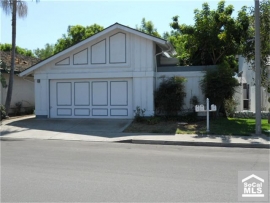
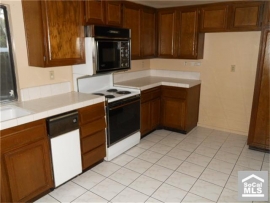







.jpg)
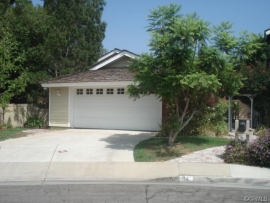
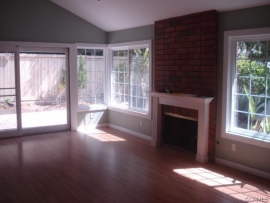


 Housing woes are still the primary cause of our weak economy. An entire industry is sitting on the sidelines.
Housing woes are still the primary cause of our weak economy. An entire industry is sitting on the sidelines. 


 The housing bust in California has enabled many renters to buy properties closer in to employment centers. The commute through the valley on the 91 is no longer a necessary price to pay to have a nice house for many who work in Orange County.
The housing bust in California has enabled many renters to buy properties closer in to employment centers. The commute through the valley on the 91 is no longer a necessary price to pay to have a nice house for many who work in Orange County.





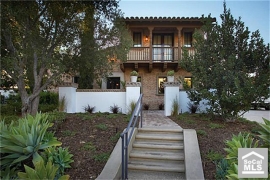
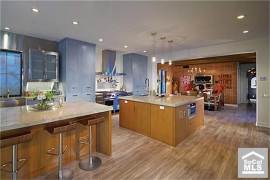










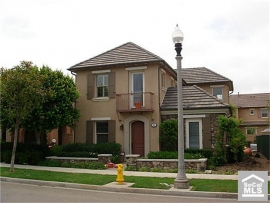
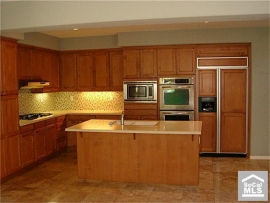






 It's difficult for most industry veterans to understand how low prices and low interest rates aren't creating demand, but the reality is (1) prudent lending standards, (2) the plethora of foreclosures and short sales, and (3) high unemployment due to the weak economy has greatly diminished the buyer pool. Couple this diminished buyer pool with abundant supplies of distressed properties, and you have a recipe for lower prices and anemic sales volumes.
It's difficult for most industry veterans to understand how low prices and low interest rates aren't creating demand, but the reality is (1) prudent lending standards, (2) the plethora of foreclosures and short sales, and (3) high unemployment due to the weak economy has greatly diminished the buyer pool. Couple this diminished buyer pool with abundant supplies of distressed properties, and you have a recipe for lower prices and anemic sales volumes.





.jpg)


